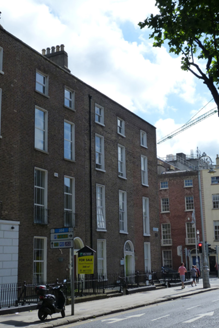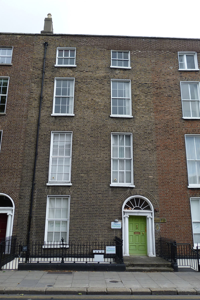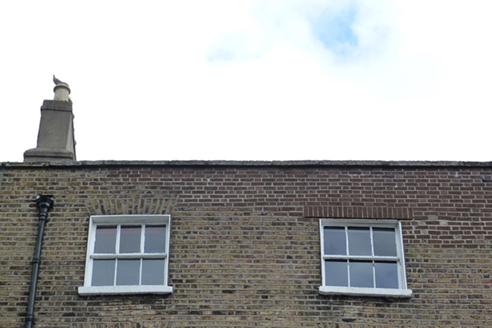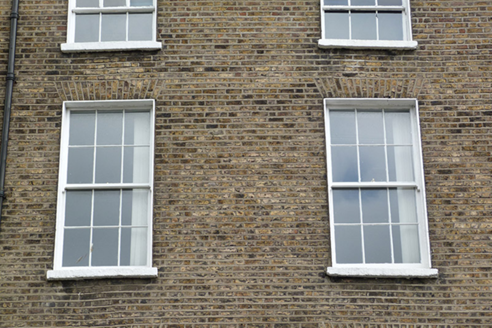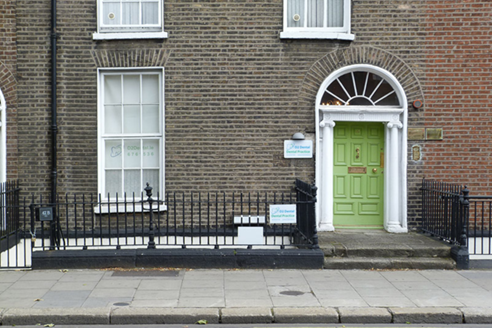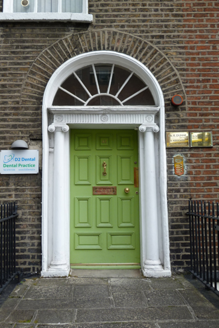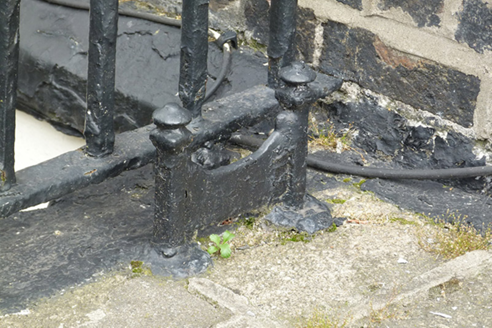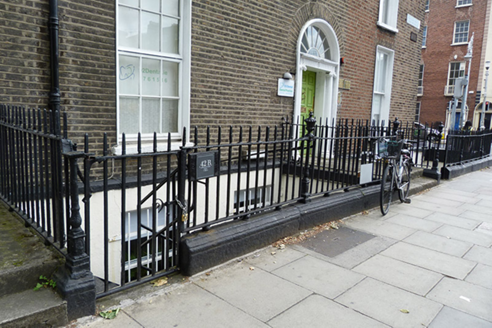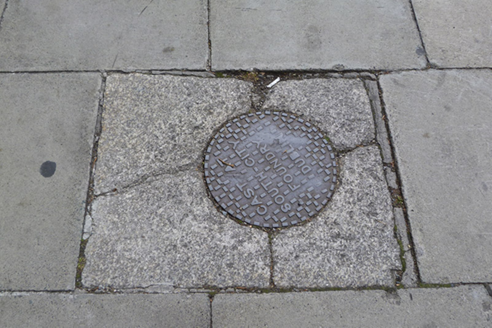Survey Data
Reg No
50100490
Rating
Regional
Categories of Special Interest
Architectural, Artistic
Original Use
House
In Use As
Surgery/clinic
Date
1790 - 1810
Coordinates
316673, 233269
Date Recorded
20/07/2016
Date Updated
--/--/--
Description
Terraced two-bay four-storey former house over basement, built c. 1800. Now in use as dental practice. M-profile pitched slate roof to front, behind brick parapet with granite coping; narrower pitched roof to rear, hipped to west end. Shouldered rendered chimneystack to west with clay pots; cast-iron rainwater goods to west. Flemish bond brown brick walling, partly rebuilt to parapet level, with painted granite plinth course over painted rendered walls to basement. Square-headed window openings, diminishing in height to upper floors, with raised rendered reveals and painted granite sills. Replacement timber casement windows to ground and first floors; timber sliding sash elsewhere, six-over-six pane to second floor, three-over-three pane to top floor and one-over-one pane to basement. Round-headed door opening with moulded rendered surround, doorcase with fluted frieze and cornice, engaged Ionic columns, spoked fanlight and eleven-panel timber door with brass furniture. Granite platform with cast-iron boot-scrape and two granite steps. Wrought-iron railings with decorative cast-iron corner posts on moulded granite plinth enclosing basement area. Cast-iron coal-hole cover set in granite flag to pavement.
Appraisal
No. 42 Baggot Street Lower is a well-proportioned late Georgian house. It retains an Ionic doorcase that provides artistic detailing to an otherwise restrained façade, and the intact detailing to the setting adds visual and craft detail to the streetscape. Thus this building contributes to the intact appearance of this principal Georgian thoroughfare. The street forms part of one of the ancient routeways out of the city of Dublin and was named for Robert Baggot a local landowner. The thoroughfare was developed in the late eighteenth and early nineteenth centuries as part of the eastward expansion of the Georgian city. The houses maintain a relatively uniform building height and design, with variations attributable to individual developers. With classical, restrained facades, decorative detail is generally limited to doorcases, window ironwork and interior plasterwork.
